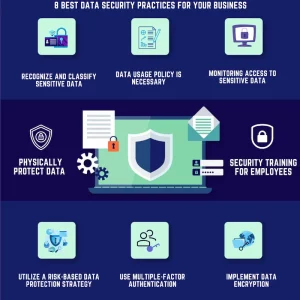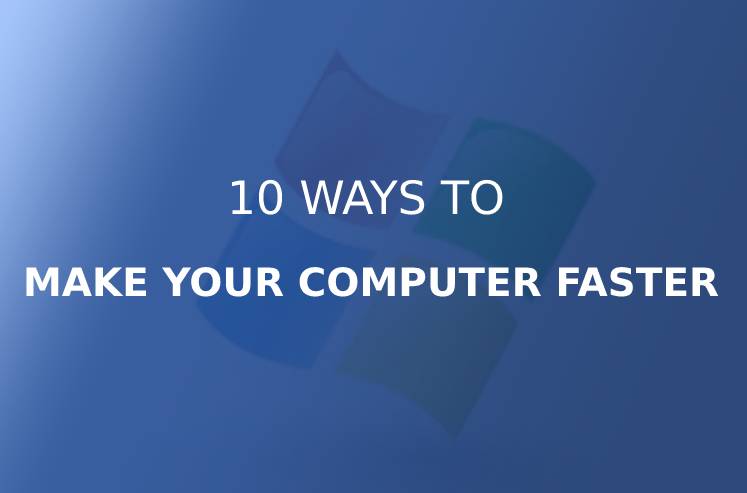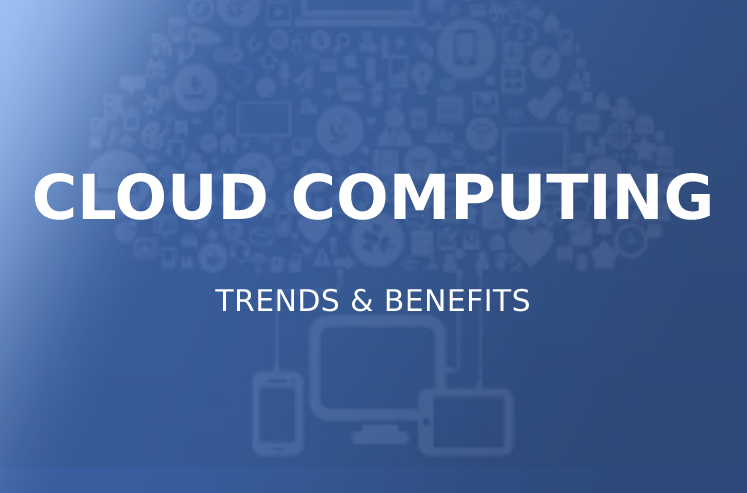Data Security is a moving target requiring ongoing attention, with new and seasoned threats and adversaries to face daily. Threats may come in many different shapes and sizes, from ransomware attacks and insider threats to unintended usage and nation-state actors. Important organizational data needs to be protected at the source to avoid compromise. Data is generated and stored by persons, networks, clouds, and devices, but safeguarding it takes a lot of effort. Thankfully, there are procedures, rules, and technologies available to assist ensure its preservation.
Maintaining vigilance can help you ensure the security of your company’s data. You should be everywhere, plugging any security hole you can find, from the server to the endpoint, on the web, at work, and on your clients’ systems.
Why? Because there is an actual and growing risk. Although hackers usually target large enterprises, it is open knowledge that smaller businesses also appeal to them. It makes logical sense. Small businesses sometimes deploy fewer safeguards and easily circumvented data protection rules to perpetuate the belief that there is “not much to steal.”
According to a survey from Verizon, 71% of data breaches are generally driven by financial gain. Hackers acquire consumer data with the evident intention of financially exploiting companies and the general population.
Organizations are being forced to concentrate more on the security of their data by data privacy legislation like GDPR and CCPA as well as evolving and growing cyberthreats. A company’s brand is damaged by costly data breaches.
Data from customers, partners, and internal processes will be collected, stored, and processed by your company. This information is usually both important and very sensitive, and when it comes to customer information, they are governed by severe laws. Businesses suffer when data security compliance issues arise, and assaults happen more frequently. In order to tackle the growing cybersecurity worries, firms must invest in data security standards.
Let’s explore the idea of data security and the significance of data before delving deeply into data security best practices.
Consult our Data Security Consultant
What is Data Security?

Protecting an organization’s sensitive resources is the goal of a collection of practices and tools known as data security. Sensitive data must be secured both in transit and at rest. Data officers should take secure data generation into account and utilize it as another data security danger vector.
Data technologies use a variety of security measures to guard against accidental or malicious data destruction, disclosure, or modification.
Administrative controls, physical security, logical controls, organizational standards, and other protective measures are all used in the implementation of data security compliance. When utilized independently or, more commonly, all at once, these data security software approaches will prevent hostile or unauthorized access to the data repository.
Why is Data Security Essential?
Protecting your data from both internal and external attacks is crucial now more than ever. Data security risks should be part of your cybersecurity strategy to help businesses become more resilient to assaults.
No matter how big or what industry they are in, businesses manage data. Data is used by both big and small businesses, from banking institutions processing huge quantities of financial and personal data to startups and SMBs gathering client contact information.
Data security platforms work to safeguard the data that a business collects, maintains, creates, processes, receives, or sends. The value of data security standards is also heavily influenced by how well they adhere to regulations and rules like HIPAA, PCI-DSS, and GDPR.
Regardless of the tool, technique, or strategy used, data security software must be handled, processed, stored, or collected in a secure manner. Data breaches may be punished with hefty penalties and perhaps legal action. Any reputational damage to a business might also result in lost sales and customers, which could have additional financial repercussions.
8 Best Practices for Data Security to Protect Privacy in 2023

Although various businesses, regions, and sectors could require various data protection standards, we have picked practices that are acceptable for the majority of firms. To safeguard the sensitive information in your firm, abide by these top 9 data security best practices.
1. Recognize and Classify Sensitive Data
If you wish to fully safeguard your data, you must be aware of the exact categories you have. After that, let your security team scan your data repository and have them write up their findings in reports. They can later classify the data according to how useful it is to your company.
As new data technologies are created, edited, processed, or conveyed, the categorization can be revised. It would be advantageous to include restrictions to stop users from inflating the categorization level. For data security systems, privileged users should only be able to upgrade or downgrade the data categorization.
2. Data Usage Policy Is Necessary
Although required, data classification is insufficient on its own. A policy that outlines the various access methods, classification-based access requirements, who has access to the data, what constitutes authorized data repository usage, and other concerns is required. For instance, limit user access to only certain areas before deactivating it thereafter.
Keep in mind that breaking the rules should result in serious repercussions.
3. Monitoring Access to Sensitive Data
You must grant the proper access control to the proper user. Only those rights should be provided to access information, in accordance with the concept of least privilege, in order to achieve the intended outcome. This will guarantee that the correct individual is utilizing the data. You may, for instance, specify the following fundamental permissions:
Complete Control: The data are entirely in the user’s control. This includes several operations including storing, gaining access to, editing, deleting, and assigning permissions.
Modify: The user has access to, and the ability to edit and delete, data.
Access: The person can see the data, but they are unable to change or remove it.
Data may be read, modified, and updated, but it cannot be removed.
4. Physically Protect Data
Physical security is frequently overlooked while discussing data security requirements. You may start by locking down your workstations while not in use to prevent gadgets from being physically taken from your location. This will safeguard any delicate data storage equipment you utilize, including hard drives and data backup strategies.
Another useful data security Platform precaution is to put up a BIOS password to prevent hackers from booting into your operating systems. In addition, caution must be taken with devices including computers, cellphones, tablets, Bluetooth devices, and USB flash drives.
5. Security Training for Employees
Inform each employee about your company’s cybersecurity policies and best practices. Holding frequent training sessions can help to keep them informed of new laws and regulations that the globe is embracing. Ask for their feedback on your current security procedures and provide examples of genuine security breaches.
6. Utilize a risk-based data protection strategy
Pay special attention to little details like potential hazards to your company and how those risks can influence employee and customer data. In this case, a proper risk assessment is required. You are able to do the following things thanks to risk assessment
7. Use multiple-factor authentication
Multi-factor authentication (MFA) is a form of data protection solution that is at the forefront of technology and is highly effective. MFA offers an additional layer of security prior to account validation. This suggests that even if a hacker has your password, they will still need to use a second or third method of authentication, such as voice recognition, a security token, a fingerprint, or confirmation on your smartphone.
8. Implement data encryption
Despite being one of the most fundamental data recovery strategies, encryption is routinely ignored. Any sensitive corporate data that is stored or sent through a network or portable devices should be encrypted. Portable systems should employ encrypted disc solutions if they’re going to store any kind of sensitive data.
Even if a breach happens and PCs or hard drives go missing, encrypting desktop systems’ hard drives that store sensitive or secret data will stop the loss of crucial data repositories. For instance, the most basic method to encrypt data on your Windows PCs is Encrypting File System (EFS) technology.
Key Takeaways
The preceding list of safety precautions is not the only illustration of good data security methods. There are other factors involved, too, such as regularly backing up all data, implementing strong password policies, encrypting both in-transit and in-transit data, using data security software, and other similar things.
However, you must understand that because it is unachievable, cybersecurity involves more than just entirely eliminating threats. Furthermore, you shouldn’t ignore it. By implementing the necessary security measures, risks can be at least somewhat decreased. ITAdOn steps in to help in this situation.
At ITAdOn, we understand the criticality of data security in today’s business landscape. Our dedicated team steps in to enhance your technical data security measures and ensure compliance with industry standards. With ITAdOn by your side, you can trust that your vital work assets are effectively protected from potential threats and breaches.
Our experts bring extensive knowledge and experience in implementing robust security protocols and strategies tailored to your specific business needs. Book a free consultation today!






